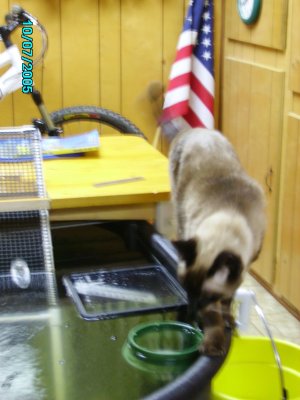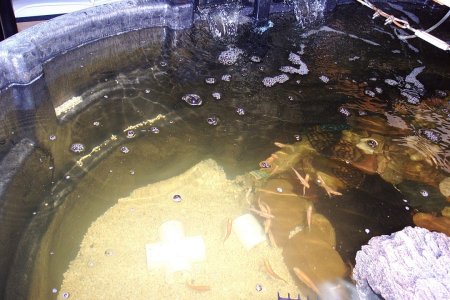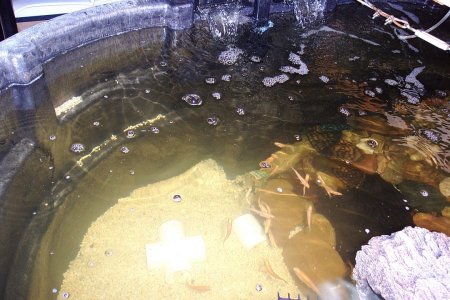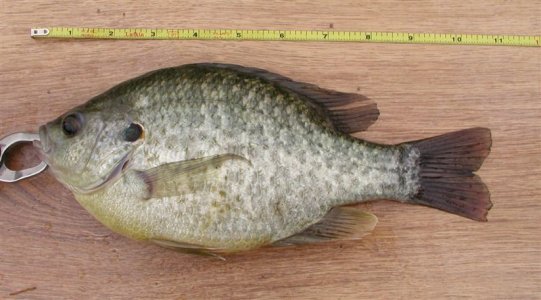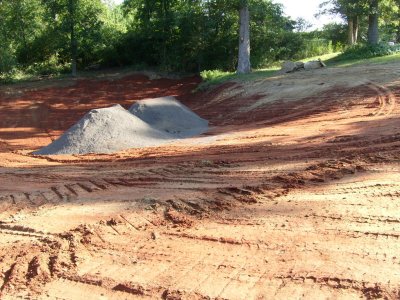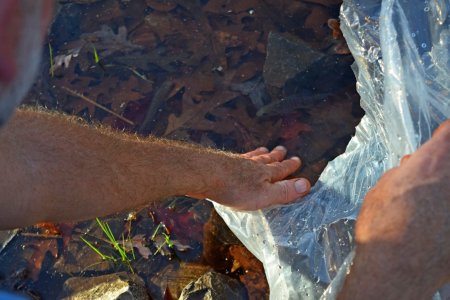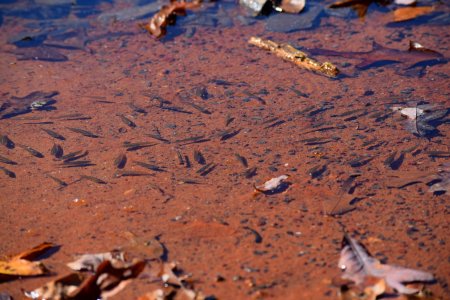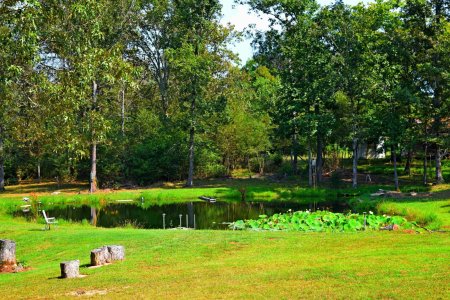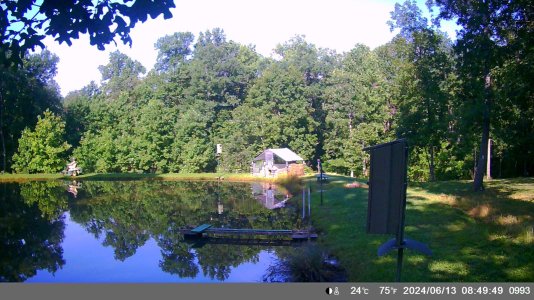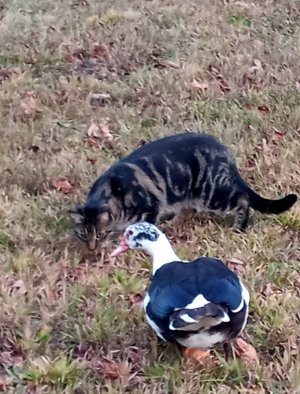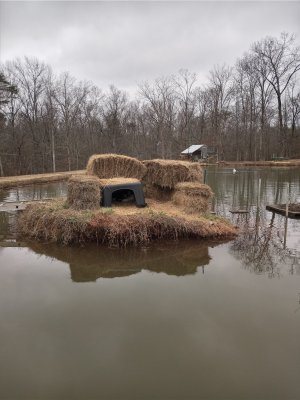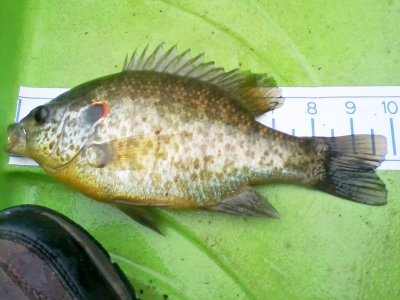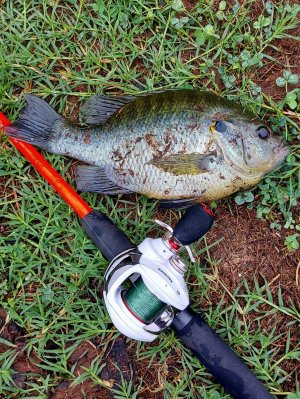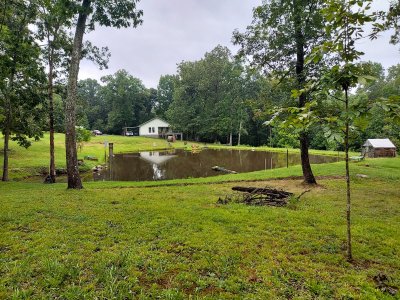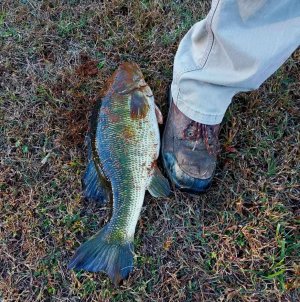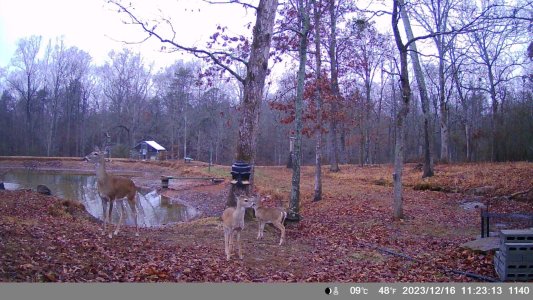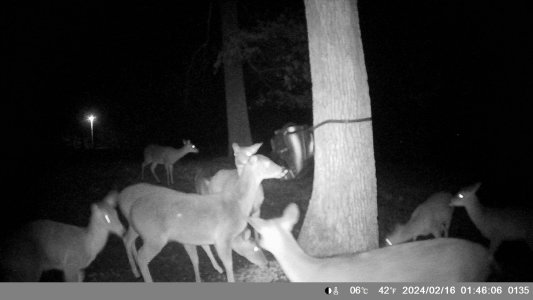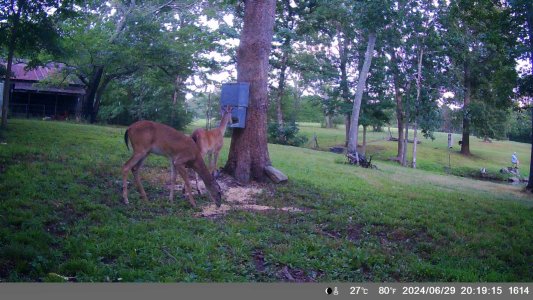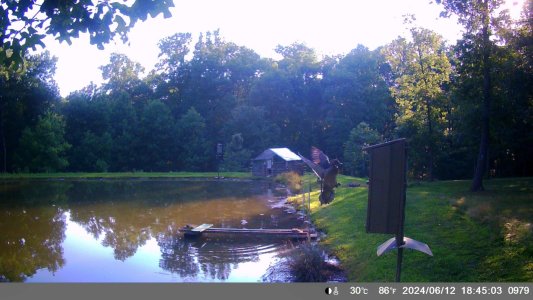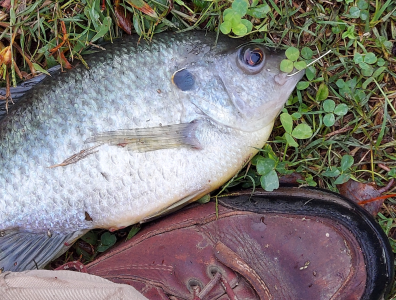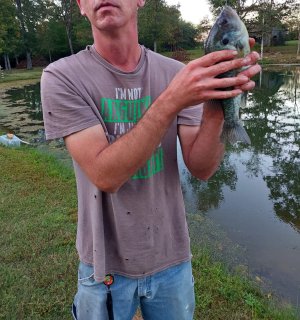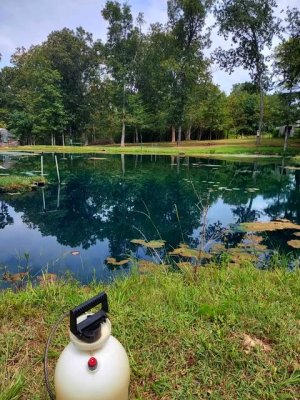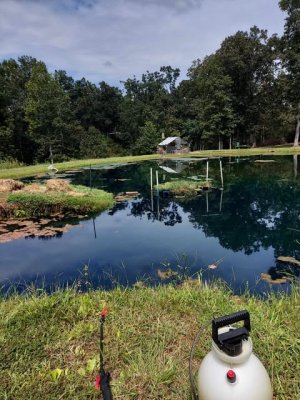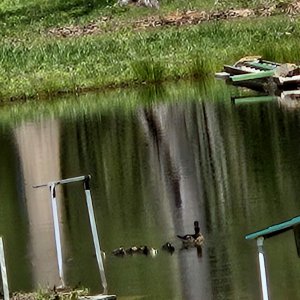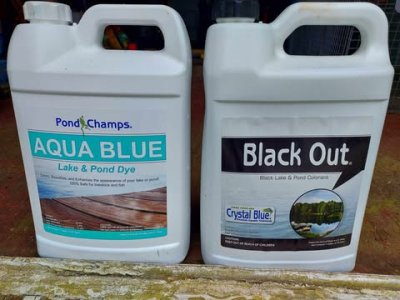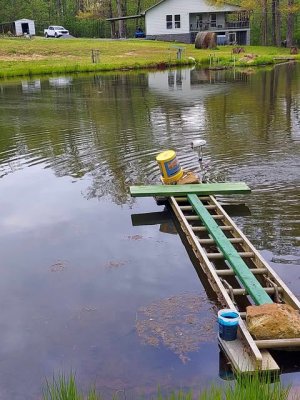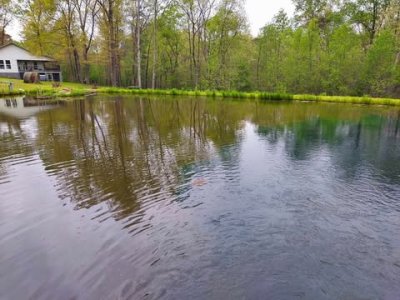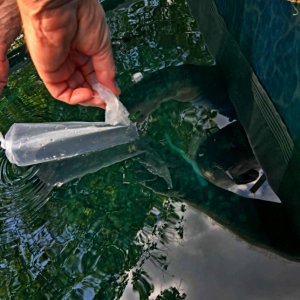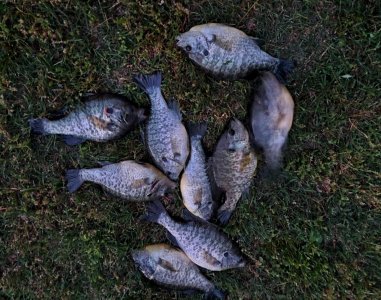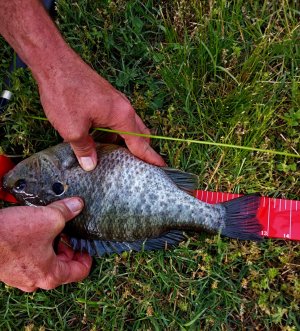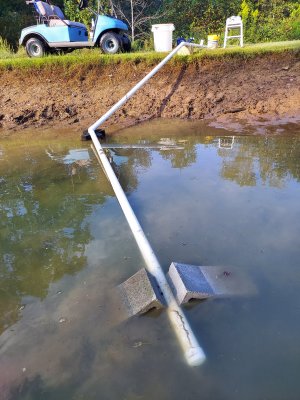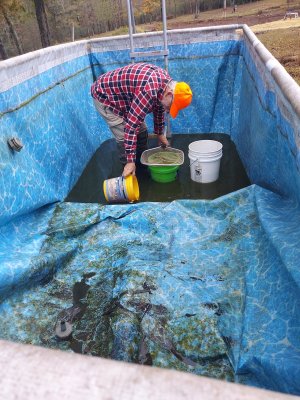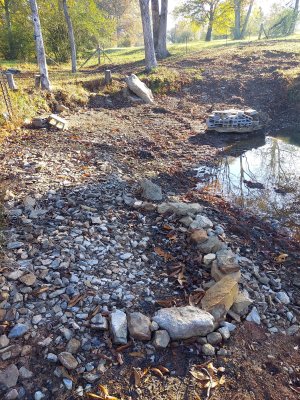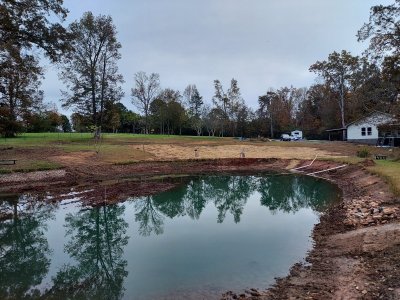SoSalty
Yearling... With promise
Years back, living in the Bakersfield desert, I looked forward to retiring in Alabama, and putting in a pond. The 5 acres we bought is beautiful, 560' of creek front all to ourselves. But alas, putting a pond in on Sand Mtn became my challenge, only 1 suitable location and limited to 0.2ac in size. While passing the last 2 yrs waiting for my wife's retirement, I had to get a 150 gal rubber maid and a single 4 in Shellcracker, we named 'El Gordo.' Piled rocks in 1 end and stocked it with: grass shrimp, crawfish, snails, rosy fat heads, and red worms (in the bottom sand). He was hand fed live crickets, blood worms, meal worms, and everything nice, no expense spared. The water was filtered, and his tank cleaned as needed.
El Gordo spent much of his time nose down to the white sand or hunted along the rock pile. Every few weeks I'd think the crawfish were gone, then find the remaining skeleton or tail of an eaten 2-3" craw. We'd rarely see the lone grass shrimp. When he had grown to 8", rosies, the orange fathead minnows, were added. It'd take him hours to work the 3"+ rosies down his throat. The small minnows seemed to avoid getting eaten. He hesitated taking pellets at 1st before developing a taste for them. A local pet store let me clean their aquarians of snails. El Gordo would give 'em a study, suck 'em in, work his phrengals, and then spit the shells 8" out in front of him. Cool. He'd clean the tank of dozens of snails in about a day. At 18 mo he measured 11" and 1 lb. We placed him in a large clear water body where he swam out 5 ft, watched us several minutes, and drifted away. Cleaning the tank, I was blown away, maybe 100 red worms, 200 craws, and 300 grass shrimp, that I assumed learned to hide from the 'hunter' and had remained unseen.
El Gordo spent much of his time nose down to the white sand or hunted along the rock pile. Every few weeks I'd think the crawfish were gone, then find the remaining skeleton or tail of an eaten 2-3" craw. We'd rarely see the lone grass shrimp. When he had grown to 8", rosies, the orange fathead minnows, were added. It'd take him hours to work the 3"+ rosies down his throat. The small minnows seemed to avoid getting eaten. He hesitated taking pellets at 1st before developing a taste for them. A local pet store let me clean their aquarians of snails. El Gordo would give 'em a study, suck 'em in, work his phrengals, and then spit the shells 8" out in front of him. Cool. He'd clean the tank of dozens of snails in about a day. At 18 mo he measured 11" and 1 lb. We placed him in a large clear water body where he swam out 5 ft, watched us several minutes, and drifted away. Cleaning the tank, I was blown away, maybe 100 red worms, 200 craws, and 300 grass shrimp, that I assumed learned to hide from the 'hunter' and had remained unseen.

Attachments
Last edited:

